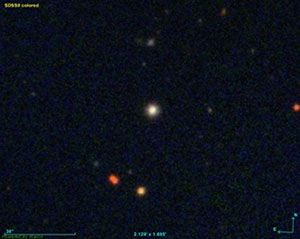One Of The Oldest Stars In The Universe Discovered By Scientists

Traces of one of the universe’s first stars was detected in an ancient star in the halo surrounding the Milky Way galaxy, a new study reports. The findings, published in the journal Science, describe how scientists discovered traces of an early massive stellar object from a chemical composition taken from a star in the Milky Way.
"This is quite a unique star, with a very peculiar chemical pattern that has never been found previously," lead author Dr. Wako Aoki, from the National Observatory of Japan told BBC.
The first stars in the universe were formed from hydrogen and helium. Nuclear fusion in these first generation stars allowed other, heavier elements such as carbon, oxygen, magnesium and iron to generate. First generation stars are believed to have short lives -- about 1 million years. When they died, they created explosions known as supernovas that spread those elements throughout space.
These first-generation stars were believed to have been much larger than stars that exist today, although no observational evidence has been found. The latest study is the first to show that the first stars in the universe were probably massive -- more than 140 times the size of the sun.
"Our discovery provides the very first evidence, or signature, for the existence of such very massive stars," Aoki told Popular Science.
Aoki and his team made the discovery using data from the Subaru Telescope in Hawaii. In a large sample of low-mass stars they identified an ancient star 1,000 light-years from Earth known as SDS J0018-0939.
"The low abundance of heavy elements suggests that this star is quite old -- as old as 13 billion years," Aoki said, referring to the Big Bang that is believed to have taken place 13.8 billion years ago.
The single star was identified out of a sample of 150 stars. While the star couldn’t be directly observed, scientists used high-resolution spectroscopy to determine its composition out of wavelengths. Each wavelength is represented by a color. The colors that were missing corresponded to its missing elements, Aoki told BBC.
In the future, Aoki predicts that newer technology will be able to observe more ancient stars.
"Next-generation large telescopes may catch the light of such very massive stars,” Aoki said. "But we don't know whether a large number of massive stars really exists or not."
© Copyright IBTimes 2024. All rights reserved.






















